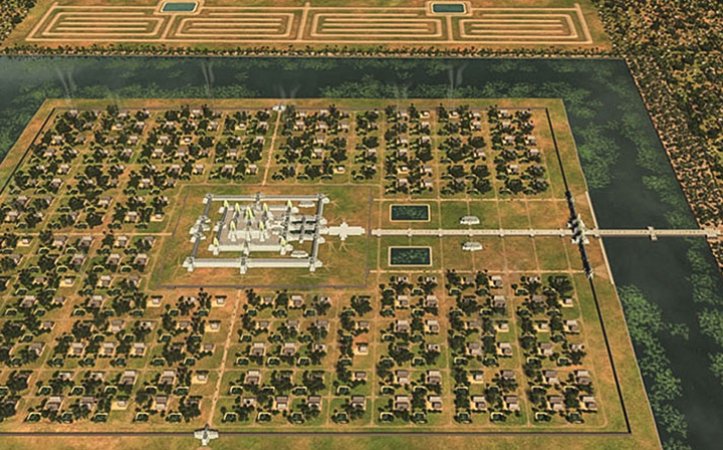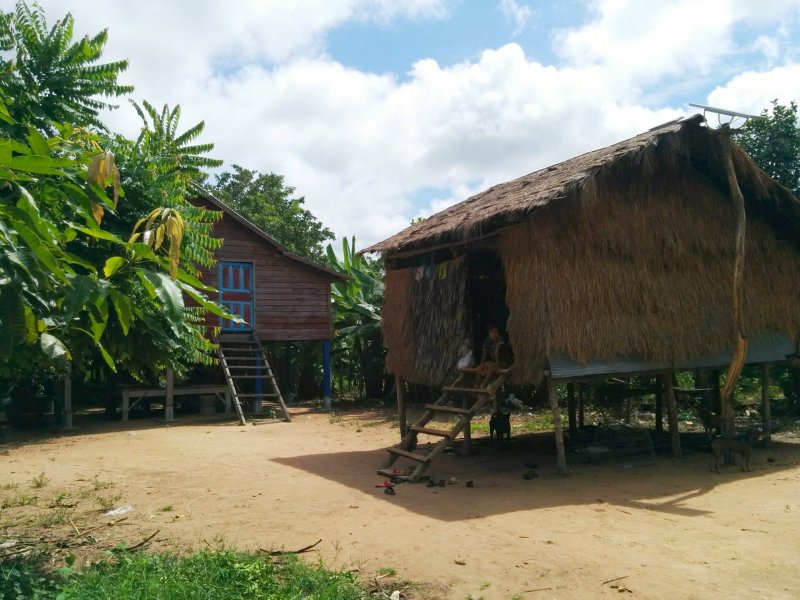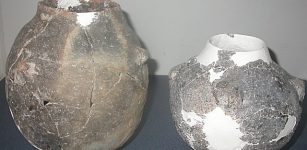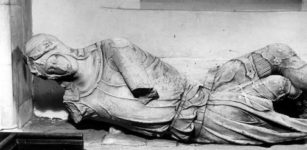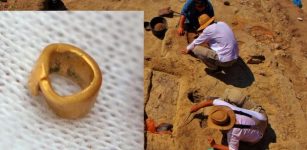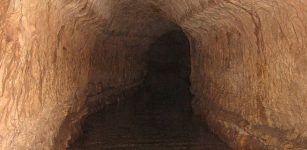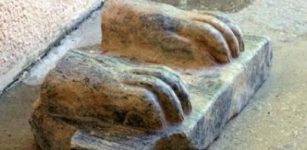LIDAR Images Reveal Cambodia’s Greater Angkor Region Was Home To 700,000-900,000 People
Jan Bartek – MessageToEagle.com – Our knowledge of Cambodia’s Greater Angkor region has increased thanks to new LIDAR images.
It has long been known this region was once home to a very large ancient city, but the exact number of inhabitants has been difficult to determine because many ancient ruins are hidden in the dense forest.
An artistic rendering of the Angkor Wat temple complex. Credit: Antiquity
The sprawling city, which thrived from the 9th to 15th centuries, has slowly revealed its forest-hidden past to archaeologists, but its total population has been a mystery.
LIDAR technology has once again helped archaeologists to shed light on an ancient riddle. While conducting a laser scan of the entire 3,000-square-kilometer mix of urban and rural landscape. scientists were able to show the logistic growth of one of the world’s largest agro-urban centers.
Based on the new study researchers have determined Cambodia’s Greater Angkor region was home to 700,000-900,000 people.
What Can The Study Tell Us About Climate Change?
According to the science team, the finding is vital for potentially helping cities under pressure of climate change.
“We predominantly are living in giant low-density cities around the world that are similar to Angkor, which displayed serious vulnerability to severe climate change,” Roland Fletcher of the University of Sydney and director of the Angkor Research Program, a collaboration with Cambodia’s Authority for the Protection of the Site and Management of the Region of Angkor said.
“We really need to know the mechanics of how Angkor worked and what people were doing to get some idea of how referable those experiences are to the risks that we face in our future,” Fletcher added.
With the combined data, including that from several decades of research by international and Cambodian researchers, the new study revealed population details of Angkor’s ceremonial city center, the metropolis extending outward like modern suburbia and embankments incorporating agricultural areas. Angkor was a low-density city, with its population spread out across a wide area.
An initial population estimate was for 750,000 residents in an area of 1,000-square kilometers around central Angkor, Fletcher said. In this area are stone religious temples, including Angkor Wat that attract tourists.
Beyond the stone temples of central Angkor were homes and locations of supporting structures, all made of organic materials reclaimed by the jungle, said UO archaeologist Alison K. Carter, an expert in fine-grain archaeological research who has conducted fieldwork in Cambodia since 2005.
LIDAR Unravels Ancient Secrets Of Cambodia’s Greater Angkor Region
Lidar, which is short for light detection and ranging, is done by sending laser pulses groundward from aircraft. It captures details of ground by ignoring ground clutter such as forests. The new data really transformed researchers’ understanding of the landscape.
Lidar documented and mapped 20,000 features not seen before, adding to a previous database of 5,000 locations.
The new data have been organized into different periods of Angkor’s growth, particularly in the lifetimes of kings who were most influential to infrastructure changes.
Lidar showed where houses, which had been built on mounds and elevated on posts, had stood. Researchers estimated that five people lived in each household and extrapolated that data to assess the region’s total population.
“We looked at the growth of the city of Angkor over time,” Carter said. “We found that different parts of the city grew in different ways. The way we think about population growth in cities and suburbs today is probably the same for Angkor.”
Scientists say the study’s findings enhance the comparative understanding of premodern urbanism.
“Studying Angkor’s population is important for envisioning the future’s urbanism with respect to global climate change,” Miriam T. Stark, director of the Center for Southeast Asian Studies at the University of Hawaii at Manoa said.
“Angkor was a tropical city that persisted through centuries of political and climatic volatility. Tracking its history and tipping point could help urban planners understand some kinds of constraints that face increasing numbers of the world’s cities.”
The news study helped researchers to create a historical model for temples built between the modern-era years of 821-1149 within an absolute average error of 49-66 years.
“This was critical for our study, because it allowed us to see how the metropolitan area developed in comparison to the civic-ceremonial centers,” Sarah Klassen, formerly a postdoctoral researcher at the University of British Columbia said.
A pair of contemporary Cambodian houses: The house in the background is made from wood and modern materials. The house in the foreground was built traditionally from organic materials such as wood and thatch. An international research team has unveiled where such organic-made homes once stood in the Greater Angkor region and how many people lived in each dwelling. Credit: Alison Carter
“It also allowed us to estimate populations connected to the temples and see how those populations changed over time.”
Periods of growth covered in the new study occurred between 770 and 1300.
See also: More Archaeology News
Several of the study’s researchers have questioned the conception that Angkor depopulated quickly due to climate pressures in the 15th century.
“We can tell from our archaeological data that that were still people on the landscape, and there is evidence of modifications being made to temples into the 16th century,” Carter said. “Our work isn’t really designed to answer the timing question for the shift of population away from this area, but it probably happened much slower than long thought.”
Written by Jan Bartek – MessageToEagle.com – AncientPages.com Staff Writer

